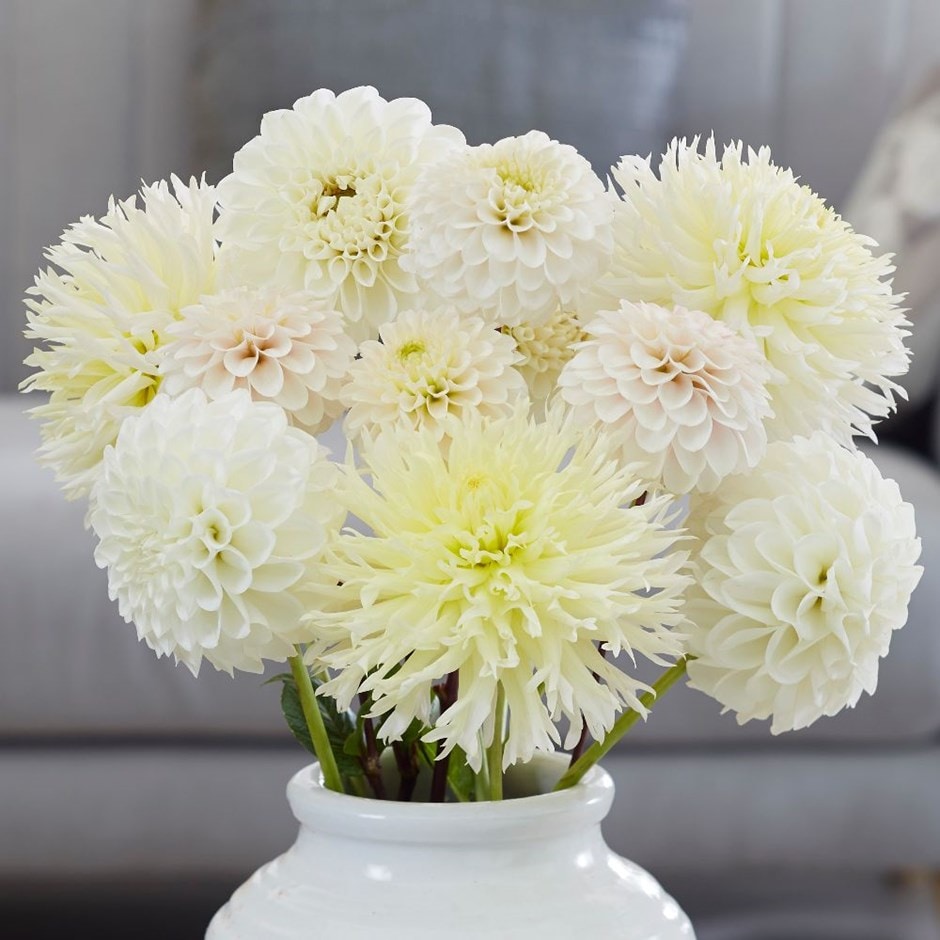Best white dahlia collection
dahlia collection
- Position: Full sun
- Soil: Fertile, humus-rich soil
- Rate of growth: Average
- Flowering period: July to September
- Hardiness: Half hardy (may need winter protection)
- Dahlia 'Boom Boom White': Topping slender stems, which rise above the soft green foliage, these dahlias form neatly rounded clusters to 15cm across, which are flushed with just a hint of greenish yellow. An impressive form that is also great for cutting. Grows to 1.1m.
- Dahlia 'Tsuki-yori-no-shisha': Impressive flowerheads (up to 20cm across) are packed with lots of petal-like ray florets, each divided at their tips to create a feathery effect. This semi-cactus dahlia originates from Japan, but will make a big splash in your garden here in the UK. Grows to 1.2m.
- Dahlia 'White Isa': Initially the petals are inrolled, and are a soft lemon-cream with just a hint of pink, but as the 7cm wide flowers mature fully, the petals flatten out and become paler. Creating a sublime and slightly ethereal effect, the flowers are excellent for bouquets or borders. Grows to 80cm.
- Garden care: Dahlia tubers can be planted outside after frost, or started off in pots under glass in late winter to early spring. Plant them horizontally approximately 12cm deep, making sure the ‘eyes’ are uppermost. Allow enough room between each tuber so the plants can grow and spread to their full size without being overcrowded. While in growth, provide a high-nitrogen liquid feed each week in June, then a high-potash fertiliser each week from July to September. Stake with canes or brushwood if it becomes necessary. In mild areas, leave them in situ over winter, but protect the crown with a generous layer of dry mulch. In colder areas, carefully lift and clean the tubers once the first frosts have blackened the foliage and allow them to dry naturally indoors. Then place the dry tubers in a shallow tray, just covered with slightly moist potting compost, sand or vermiculite and store in a frost-free place until planting out again.
Add a touch of class to your borders with these lavish-looking dahlias. They will start to flower in midsummer and if cut regularly (they make long-lived additions to the vase) they will continue to bloom well into autumn.
In each collection you will receive one tuber of each of the following cultivars:
- Humans/Pets: Ornamental bulbs - not to be eaten

